Motocross Riding Tips For Beginners and How to Get Better
Motocross riding is a perfect blend of exhilaration and freedom. Every time you get on your dirt bike, there are new adventures to explore and experiences to learn from. The possibilities are simply endless.
On the flip side, motocross riding is not a sport or hobby that you can simply take on at a whim. It requires skill and an understanding of how to handle yourself when riding on different terrain. It may take a little while before you can put on your cool motorcycle goggles and confidently ride off on your own.
To help you get off to a solid start, here are some motocross 101 tips.
Table of Contents
Handling Beginner's Nerves

Watching other people ride and actually doing it yourself are entirely different experiences. As such, it is not unusual to have some beginner’s nerves before, during, and even after your maiden ride. They also vary from person to person, some people may not even experience them at all.
One way you can get around this is by preparing adequately for your first ride and being patient with yourself through your learning curve. When you understand what to expect, you will be less rattled by events as they unfold during your ride. This can be done by first watching others and understanding how your motocross bike works.
In the spirit of avoiding surprises, it is advisable that you take your first rides in a controlled environment like an empty lot or a motocross club. There will be less for you to worry about in terms of distractions and safety. In turn, you will be able to focus on mastering your riding.
Consult With a Trainer
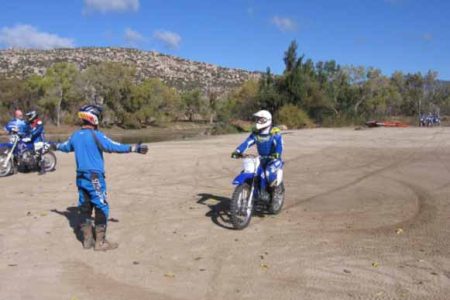
As a rule of thumb, it is always better to ask and learn than insist on going it alone. This is why consulting with a motocross trainer and even taking a few classes is highly recommended. Once they have taught you the basics, you can practice and get a grasp of motocross riding much faster.
A quick online search could point you in the direction of motocross riding schools in your area. The upside of taking classes from one is you will meet other riders that you could learn from and grow with. However, if that kind of setup is not your speed, you can always sign for private lessons with a riding instructor.
Choosing the Right Motocross Bike

Your bike choice makes a fundamental difference in how hard or easy your rookie rides will be. Granted, everyone would like to have the coolest beast of a bike that their money can buy. The problem is, the big fancy bike you want will likely be harder to handle as you learn and could even put you at risk.
When shopping for a motocross bike, consider:
Your skill level- as a beginner, your skill level is most probably low to medium. A complex bike with lots of power could overwhelm you rather easily. It is better to start with a manageable bike in the 200-250cc range. It will likely even be cheaper and you can upgrade when you have honed your skill and established your bike preferences.
Size matters – the size of the bike should be capable of handling your weight and height. As you shop, sit on prospective bikes and try them out for size. Ensure that you can reach all controls comfortably and that you can handle the weight of the bike too. If you are tall or heavy set, you may have a hard time finding a comfortable bike in the beginner’s range. The mid-level bikes may be more ideal.
Riding plans – where do you plan to ride your bike? Off-road? On-road? These questions matter a lot when choosing your bike as not all of them are made equal. Using an on-road bike off-road is like taking a Ferrari on a game drive; it is a great car but that is not what it is designed for. Identifying your preferred riding environment will also help you choose the right fuel capacity and tire size.
2-stroke Vs 4-stroke engines- a 2-stroke engine bike is a lot lighter and responsive to your movement than a 4-stroke engine bike. Therefore, you may have an easier time learning on a 2-stroke engine bike. Later, when you are keener on more speed and power, you can aim for a 4-stroke motocross bike.
Motocross Gear
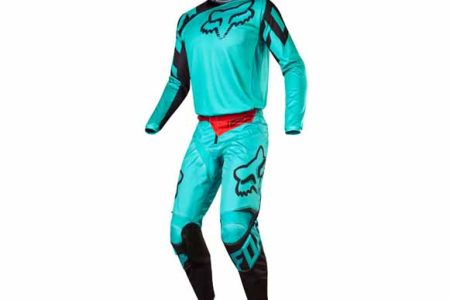
No matter how good you get at motocross riding, insist on always wearing protective motocross gear. Even at your best, accidents and incidents are sometimes inevitable. Your safety is thus something you should treat with utmost seriousness. Recommended riding gear consists of:
A Helmet
Dust, wind, rain, and sunlight can all make your ride very uncomfortable if your head is not shielded against them. There is also the risk of a concussion if you fall or whiplash from landing impact when you are navigating rough courses. This is why helmets are an extremely important part of motocross gear.
Aim for a lightweight and comfortable helmet that is fully certified for motocross riding. It should fit properly without you forcing your head into it or it wobbling due to being oversize. The interior padding should be well-done such that neither your head nor face come into contact with any hard surfaces. Poor padding puts you at a higher risk in the event of head trauma.
Of course, everything can’t be about functionality, fun is a major consideration too. Look out for a motocross helmet brand that offers cool stylish designs while honoring stipulated safety standards.


A Chest Protector
The goal of a chest protector is to ensure that your vital thoracic and abdominal organs are protected against impact. Such impact could include falling, riding into tree branches, or debris like stones and mounds of soil get churned up during rides.
Chest protectors are made of a relatively rigid material that is padded on the side facing your body. They typically span from the shoulders to your lower abdomen. The fit should be comfortable such that you do not feel constricted and can move with ease. Adjustable straps, good body conformity, and ventilation are equally helpful design factors.
For best results, aim for chest protectors that have undergone recommended tests and received CE certification.
Boots and Gloves
An ideal pair of riding boots should have a structure that is firm enough to protect your foot and ankle but comfortable enough to walk in. This is achieved through a mix of rigid thermoplastic material and soft padding on the inside. Speaking of padding, ensure to test the boot to see that it fits right; sometimes padding can make your usual boot size feel small.
Motocross gloves shield you from the elements, enhance your grip, and protect you from bruises and blisters after long hours of riding. To this end, they should fit in a way that allows you to flex your fingers and wrists easily. Endeavor to find designs that have some treading on the palm for grip and are made of durable friction-resilient fabric.


Motocross Goggles
All the debris you shield your body from could just as easily get into your eyes, hence the need for motocross goggles. That said, if they are going to survive such debris, it would be best to choose anti-scratch goggles. In addition to their resilience, they are also more durable.
Further, keep in mind that outdoor lighting conditions change during different times of the day. Consider light-optimized options such as polarized motorcycle goggles that reflect and filter polarized light away from your eyes to protect them from glare. Photochromic and anti-glare lenses could equally come in handy. Better yet, you could get magnetic dirt bike goggles that allow you to swap lenses depending on the conditions.
If you wear prescription glasses, it is imperative that you have them on when riding. In such a case, you will still have to wear motorcycle goggles over glasses. This requires special goggles known as OTG goggles. Check with your preferred motocross goggles manufacturer to find out if they offer them or if they have customization services.
Motocross Riding Tips
So, you have gotten your nerves in check, trained a little, found a dirt bike, and bought the right gear, right? Now comes the fun part, the riding. Let’s go through some basic riding tips that could help make your first sessions less bumpy.
Body Positioning

The body of a motorcycle is streamlined to reduce resistance as it moves because resistance reduces speed. When you are on the bike, you become a part of its structure, and thus your body stance and weight impact how it moves.
Body positioning can be taught but after your first few rides, it will become more instinctual and you will be more confident. Some general positioning tips you can try include:
Face your right leg towards the right as you turn and vice versa. However, you only have to face the direction, you do not have to exert your weight towards it.
Always lower your body towards the bike in a crouch-like position when braking. It is safer and yields better results.
Maintain a seating position and focus your weight forward when taking a corner.
Given as the bike is engine-powered, shifting your weight on a dirt bike is only for purposes of maintaining stability and making your movements smoother. Try and relax your muscles as you ride though so that you do not end up sore at the end of the day.
Braking
You are probably wondering why braking would come up before actual riding. That is mainly for 2 reasons. First, when you know how to stop your dirt bike it means you have control over your riding experience. Second, different braking styles will give you a deeper insight into motocross bike operations in general.
Rear Wheel Breaking
When braking, the rear wheel brake is the one you engage first but it only does about 30% of what your front brakes do. It is, nevertheless, useful for gaining control at high speed, braking on slopes, and generally supporting the front brakes
To engage this brake, increase your foot pressure on it gradually when you are near your intended stoppage point. Gradual braking yields smoother stoppage and avoids the need to lock the rear wheel especially on slopes where it can be dangerous.


Front Wheel Breaking
This brake lever is engaged by a palm squeeze given as its right at the steering area. Perhaps it is also because of this that most learners engage it with such urgency and end up braking harder than is ideal.
The thing to keep in mind with your front brakes is that they are quite powerful and moderation is key. At the first gentle press, you will notice the bike start to slow down. If you increase pressure gradually as you near the stop, you will come to a gentle halt.
Avoid front braking when riding at high speed and when going downhill. Rear braking would serve you better in these two circumstances.
Engine Breaking
If you need to stop your dirt bike to avoid crashing or for any other emergent reason, roll the throttle forward to turn off the engine. Motorcycle wheels are propelled by pistons that move up and down powered by fuel combustion. With the engine off, there will be no fuel supply. The pistons will have no source of power and will thus stop propelling the rear wheel. As a result, your bike will slow down and if you apply the rear and front brakes, it will stop altogether.
A common thread you may have picked up on here is that the secret to braking is anticipating it and effecting it gradually. Nevertheless, every bike has a unique response rate. It would be important to test your brakes in practice runs so that you know what to expect.

Acceleration

Once you have mastered braking, acceleration is a walk in the park. It is effected through the throttle; rolling the throttle towards you increases speed while rolling it away from you reduces speed. However, as with all riding techniques, moderation and gradual increase are important.
Remember to hold off on the throttle when approaching a braking section or a corner.
Changing Gears on a Semi-automatic Dirt Bike

A semi-automatic dirt bike has no clutch. Changing gears is, therefore, a straightforward process but you will need to pay attention to your bike. Gear shifting works as below.
- At your start point, the dirt bike will be in neutral gear.
- Squeeze the front brake gently to keep the bike steady.
- Press down on the gear lever one click to engage the first gear.
- Release pressure on the front brake and roll the throttle to turn on the engine.
- Listen for the revving of your engine as you accelerate. You will know that it is time to change your gear when the pitch of the revving peaks.
- To switch to the next gear, click the lever to a higher gear.
- When you have gotten to the highest gear and need to shift again, click down to the first year.
Changing Gears on a Dirt Bike With a Clutch

The presence of a clutch adds an extra step to shifting gears. You need to squeeze the clutch so that it releases motors adjacent to the gear system and allows you to switch gears. If your bike has a clutch, your gear change will go as follows:
- On the hand bars, gently pull the clutch towards you.
- Click the gear lever to make a gear change.
- Ease of the clutch as you roll the throttle to accelerate
Practice Moves to Help You Improve Your Motocross Riding
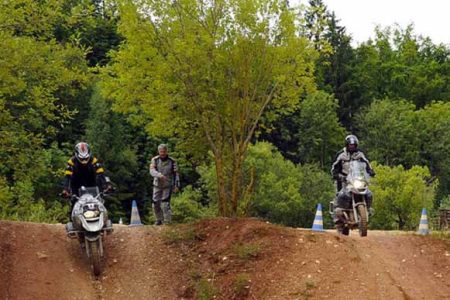
In the beginning, every move will be deliberate and measured because you are still learning the ropes. However, the key to improving your skill level is practice. The more you go on rides, even slow ones, the more you build muscle memory and hone your riding abilities.
That said, there are some key areas you could focus on during practice sessions to become a more effective motocross rider. Spend brushing up on:
Cornering- even professionals struggle with corners so do not feel defeated if navigating them seems daunting. For best results, approach corners slowly, position your body to lean into the corner, and maintain a steady throttle unless it is a sharp corner.
Pacing yourself among other riders- eventually, you will be sharing riding space with other riders or drivers if you ride on-road. As you get more confident, practice riding in shared routes and learn how to pace yourself in terms of distancing. Avoid tailgating and stay attuned to your surroundings at all times.
Riding rules– riding off-road for fun is a relaxed affair that has no binding rules aside from riding safely. In contrast, managed courses belonging to clubs or training facilities may have some regulations. Riding on-road also makes you subject to traffic laws within your jurisdiction. Ensure to have all the requisite documentation and stick to areas where riding is permitted.
Slow vs fast riding- slow riding can be just as dangerous as fast riding if you do not master maintaining stability. When practicing at higher speeds, focus on learning how to maintain control of your dirt bike. Take note of your bike’s speed limitations as well and its response to braking and shifting gears at various speeds.
Safety Tips
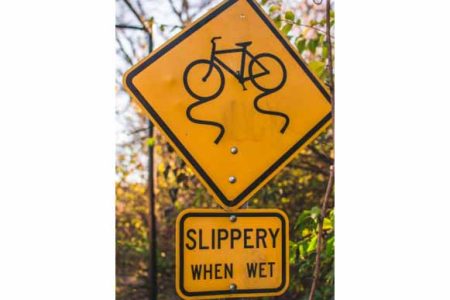
Investing in safety gear is the most fundamental safety measure you can take. Still, there are other risks that you should be aware and wary of while riding. They include:
Snow – snow makes any terrain slippery and tricky to navigate. Braking is no takes longer to kick in and corners become exponentially harder to negotiate. It is best to stick to riding in dry conditions, more so as a beginner.
Poor visibility- when you are not able to see clearly, due to fog or light glares or darkness, you are at risk of countless accidents. If there are any obstacles or ditches, you would have very little if any reactionary time to brake or change course to avoid crashing. Aside from wearing the right motorcycle goggles, avoid riding in poor visibility at all costs.
Going off-road – off-road motocross rides are full of surprises and can be unsafe if they are in wild unmonitored terrain. Consider riding in groups than by yourself. Exploring well-established off-road riding sites may also be a better idea than uncharted areas.
Stunts- if you enjoy a good adrenalin rush, you may be tempted to experiment on stunts like jump turns and hits as soon as you can ride. Fun as they are, they carry a significant amount of risk. Given the risk of falls and conditions such as Chronic Traumatic Encephalopathy, you may want to go easy on the stunts.
Poor dirt bike maintenance – your dirt bike will only serve you as well as you service it. Make an effort to inspect it or have a professional check it for you every so often. Off-road bikes especially tend to take a beating out in rough terrain and may require regular maintenance to avoid stalling and other mishaps.
Motocross Pains and Injuries
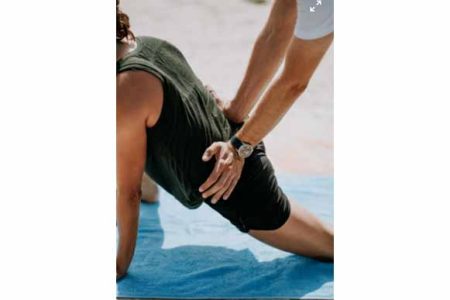
Motocross riding is very demanding on the body. Alternating between sitting, standing, and other body positions may have you feeling thoroughly sore after a day of riding. Off-road courses, in particular, are brutal on motocrosser’s muscles as they are quite bumpy. Still, these kinds of pains are normal and can be remedied by rest, massages, and hot compresses on sore areas.
Consider taking up a fitness regimen to attune your body to the demands of motocross. It could help your muscles loosen up and build endurance. Explore other forms of exercise such as yoga too. It is effective for alleviating muscle soreness and calming your heart rate after the exhilaration of riding. Some riders have difficulty sleeping or relaxing due to an unrelenting feeling of being high-strung.
While you may be passionate about riding, it should never take precedence over your health and well-being. If you feel under the weather, hold off on your riding plans until you are in good health. Poor health can impair your focus while riding which would endanger both you and those around you. Some medications and alcohol too can alter your presence of mind and it is advisable to stay off your bike when under their influence.
Conclusion
Mastering a new skill takes patience, tons of practice, and dedication. It is no different with motocross riding. Every defiant-looking pro you see soaring through courses was once in your beginner shoes but they put in the work to earn their stripes. You too can earn yours and soar through courses in cool gear and sophisticated motocross goggles. More so now that you have all the insider tips to guide you.
